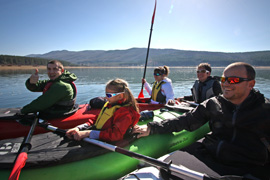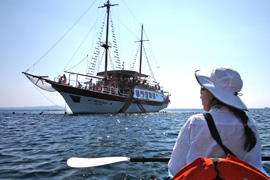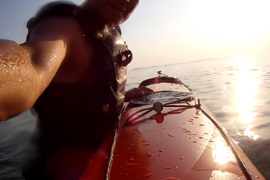When choosing a Paddle Board (SUP) that is right for you, you should first answer a few questions:
- What will I use it for?
- Will anyone besides me use my paddle board?
- Where will I paddle?
- Do I have a place to store it and how will I transport it?
- What is my budget?
Choosing a paddle board by what it will be used for
If you use it primarily for surfing, get a shorter SUP. It is more maneuverable. It may also have a load capacity at the limit for your weight. If you use it for long trips and want to cover long distances, get a longer paddle board. It has better speed and tracking. If it’s for yoga, choose a wide and stable paddle board with a cushioned deck.
Choosing a paddle board by who will use it
If you are going to use the SUP for the fun of everyone in the family, choose one Paddle Board that will be able to carry the heaviest person in the family, possibly + a small child. Alternatively, if you want everyone to get on the paddle board and paddle together, head to the Beach 11’6” V-kayak.
Choosing a paddle board depending on where you will paddle
Paddle board can also be used in lakes and at the sea in light to moderate winds. At the sea – most often in the morning and late afternoon, when the sea is calm and the wind is weak. Of course, you can also surf the waves towards the shore. Those boards that are designed for waves have an upward curved nose and enough volume in this area. They are often equipped with 3 fins. If you are going to paddle only on the lake in calm weather, you can also aim for a straight form board, often with a more pointed nose shape.
Choice depending on the possibility of storage and transportation
The answer to this question depends at most on whether you will take an inflatable or rigid paddle board. Transportation is the lesser problem. I personally prefer to transport a hard board on the car roof, so my trunk remains free. The bag with the inflatable paddle board and all accessories can take up the entire trunk and even does not fit in some small cars. The advantage of an inflatable one is in storage, in load capacity (if you need a large one) and sometimes in price.
Recently, inflatable boards have replaced rigid ones from the market in the widest market segment for general application. The technology has advanced so much that they inflate to the point where they are practically rigid and do not bend in waves. Pay attention to the particularly popular models in this segment Beach 11’6” V-kayak and Beach 10’6” V-kayak, which can be paddled as both SUP and kayak.
If you have requirements for high efficiency, you will opt for a rigid paddle board. Still inflatable models cannot achieve the shape with attention to every detail and, accordingly, the behavior on water of hard boards. In addition, you should be careful not to leave them in the sun on the shore for a long time, inflated to maximum pressure. The sun will inflate them and they may burst. This applies to all brands and is a physical law.
Choosing a paddle board depending on the budget
Hard boards are smooth, glide better in the water. They have a more refined shape and are more chic. You don’t have to worry that they will burst if you forget them puffed up all the way in the sun. Hardboards are not necessarily more expensive than inflatable (high-end) ones. If you choose a rigid paddle board, depending on the budget, you choose between polyethylene and fiberglass materials. The difference is mainly in the weight and smoothness of the hull.
Go to the Paddle Board (SUP) product catalog for selection.





